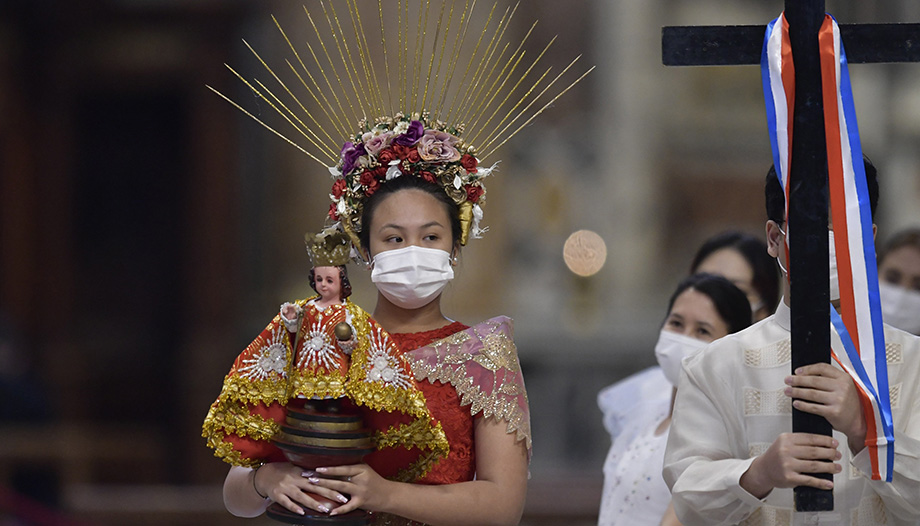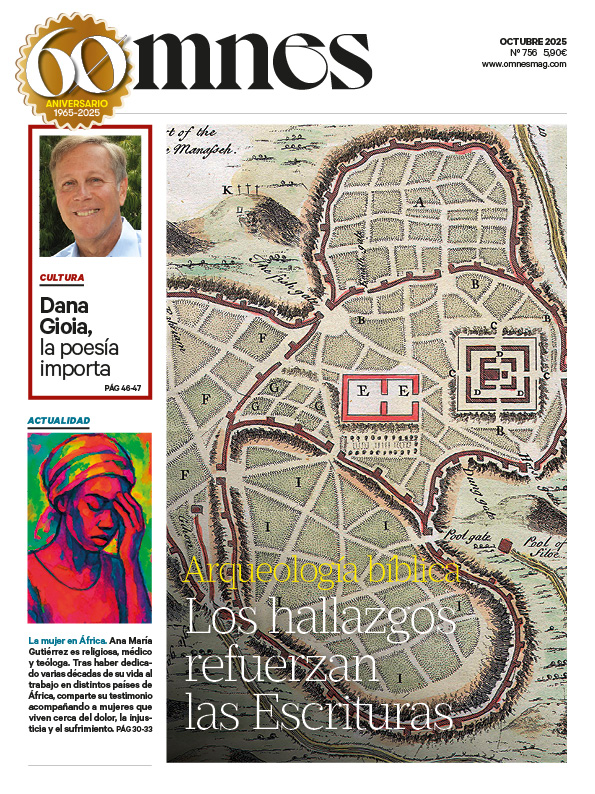On March 31, 1521, Easter Sunday, the first Mass was celebrated in the Philippines, and since then the Word of God has spread throughout those islands, to successive generations and in the lands of the Far East, up to the present day. The words of Sacred Scripture have been fulfilled to the letter: "By their fruits ye shall know them." (Lk 6:43), because there are not only faithful communities of Filipinos in the archipelago, but throughout the world, evangelizing so many nations with their example and their word.
Pope Francis wanted to join in the joy of the whole Church with a solemn Eucharistic celebration in St. Peter's Basilica on March 14. In his homily he wanted to highlight two great features of that evangelizing task, which involved the whole Church in Spain.
First, he referred to joy and trust in God as part of the Gospel of Jesus Christ, which have taken root in the soul of the Filipino people: "You have received the joy of the Gospel: that God so loved us that he gave his Son for us. And this joy is seen in your people, in your eyes, faces, songs and prayers.". Immediately, he pointed out how the call of Jesus Christ to preach to all nations soon found an echo in the Filipino people, who from the beginning became the missionary people of Asia, and expressed his gratitude: "I want to thank you for the joy you bring to the whole world and to Christian communities.".

There were two very significant events in the ceremony in St. Peter's Basilica: the representatives of the Church in the Philippines went on pilgrimage to Rome with the Santo Niño of Cebu and with the processional cross that they took to the Magellanic Islands. Precisely, the evangelization of those islands was characterized by the impulse of devotions and popular piety: invocations of the Virgin in all the cities, to St. Joseph, to the saints, as well as the constitution of confraternities. Regarding the processional cross of Magallanes, it is a gesture of gratitude to Spain and, specifically, to the Patronato de Indias, which mobilized the material means and people to bring the faith to the Philippines by sending missionaries of the regular and secular clergy, and works of art, altarpieces, gold and silver work, to decorate the first Christian temples with dignity, as well as the construction of hospitals, orphanages and asylums for the elderly. Likewise, the name Magellan recalls the Spanish sailors who led the ships to those remote lands and who, thanks to Legazpi and Urdaneta, found the sea currents that made it possible to open a maritime route from Mexico to Manila in 1565.
Since then, evangelization gained new momentum and missionaries from various religious orders arrived from Spain, via Mexico: the Augustinians, who in 1572 had already built their first convent in Manila; and in 1579, the Franciscans. In 1579 the first episcopal see was erected in Manila and the first bishop of the archipelago, the Dominican Fray Domingo de Salazar, was consecrated.
Finally, the Jesuits arrived in the archipelago. By the end of the 16th century there were already almost five hundred missionaries from different orders working alongside priests of the secular clergy. The evangelizing method they followed was the same that had been implemented in America years before: the call of the twelve apostles, consisting of learning the language of the natives and their customs and, immediately, speaking to them directly about Jesus Christ and his saving doctrine, to finally invite them to believe in Him and, if they did, to prepare themselves to receive baptism, and then the other sacraments. In the middle of the 17th century, there were two million native Christians in the Philippines.
In 1987, Pope John Paul II, in his Pastoral Exhortation Redemptoris missio, the various steps of evangelization up to the establishment of the diocesan Church, the application of the Tridentine Decrees, the establishment of diocesan synods and the first diocesan seminaries.
The high positions that governed those lands -virreyes, presidents of the Audiencias, governors- were selected by the Council of the Indies among honest people of good intellectual level and, after a few years, they returned to Spain after being submitted to the so-called judgment of residence. Thanks to these mechanisms and other experiences incorporated into the laws of the Indies, it must be recognized that it was a much less controversial colonization than the American one.
On the other hand, the laws of the Indies were applied according to the spirit of the testament of Isabella the Catholic, and the natives were treated as true free men and subjects of the crown of Castile, evangelized according to the requirements of the donation of Pope Alexander VI in the Bulls. Inter Coetera 1503 to the Catholic Monarchs. Finally, another milestone in the evangelization of the Philippines, in continuity with that of America, was the early erection (1611) of the University of Santo Tomas de Manila, a sign of the importance given to university education and literacy.
Member of the Academy of Ecclesiastical History. Professor of the master's degree in the Causes of Saints of the Dicastery, advisor to the Spanish Episcopal Conference and director of the office of the Causes of Saints of Opus Dei in Spain.






